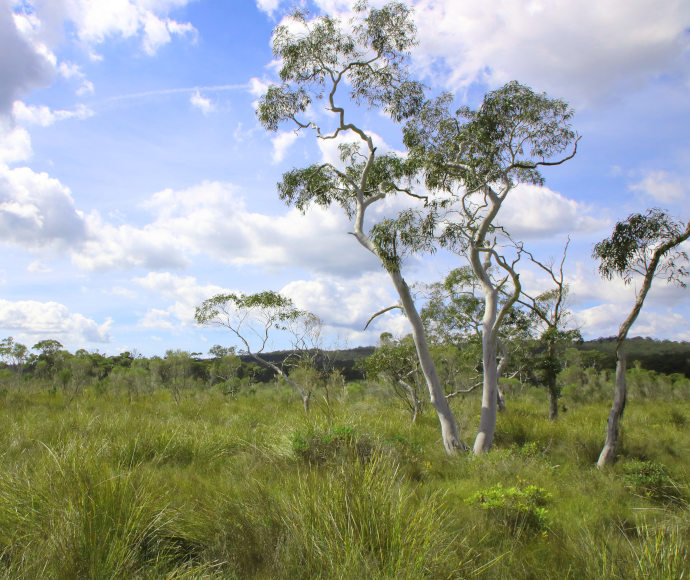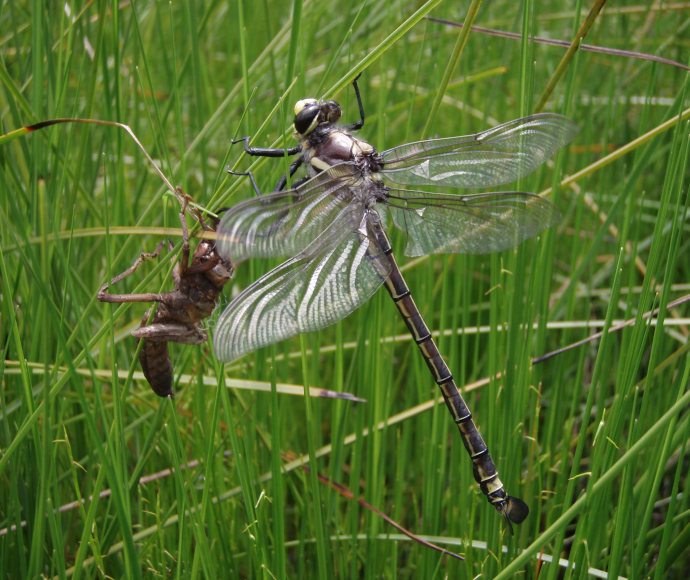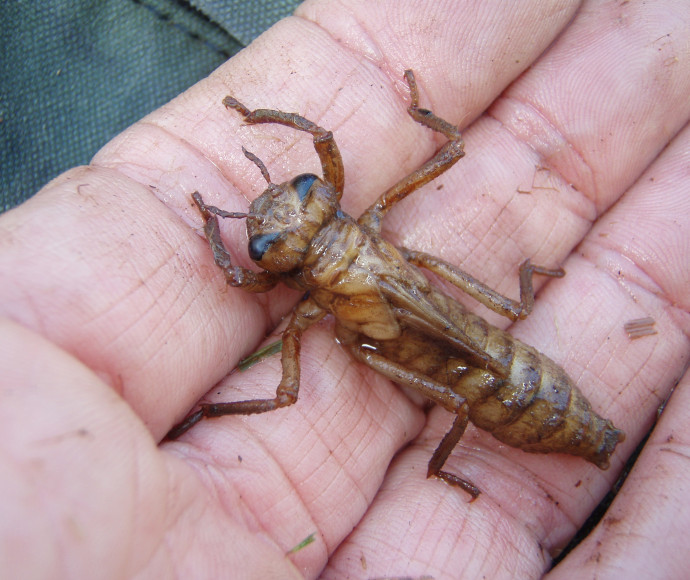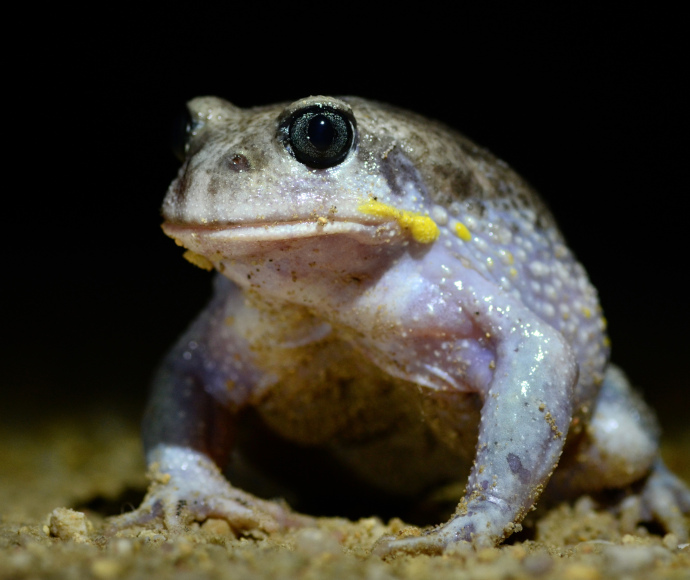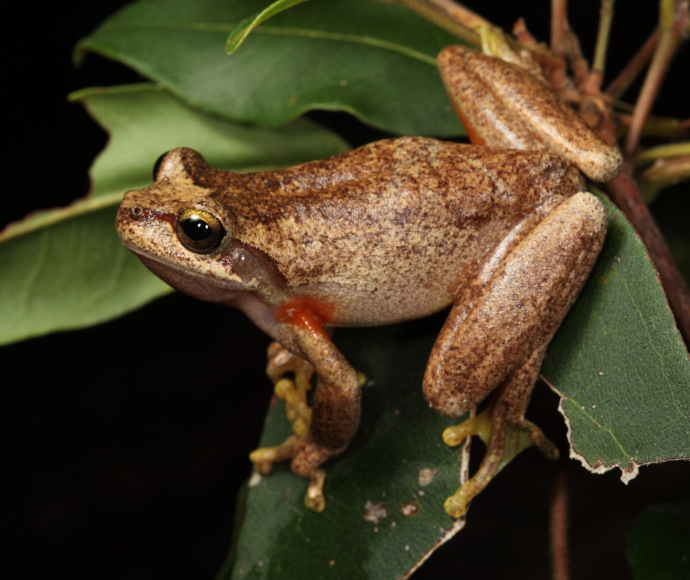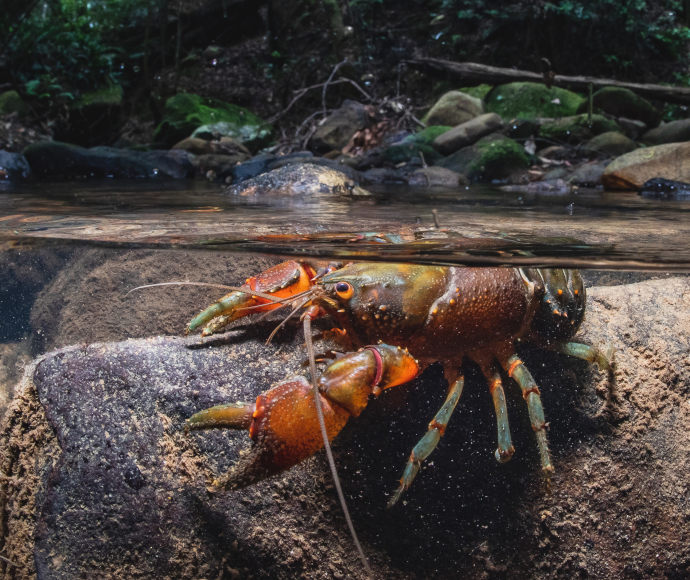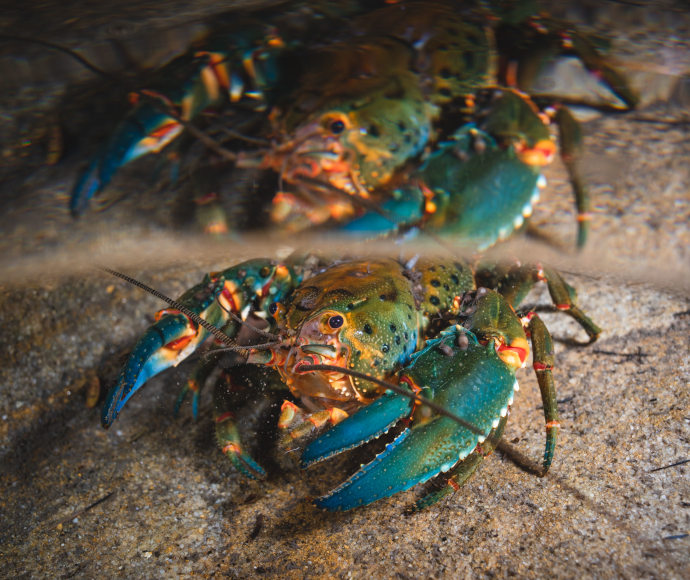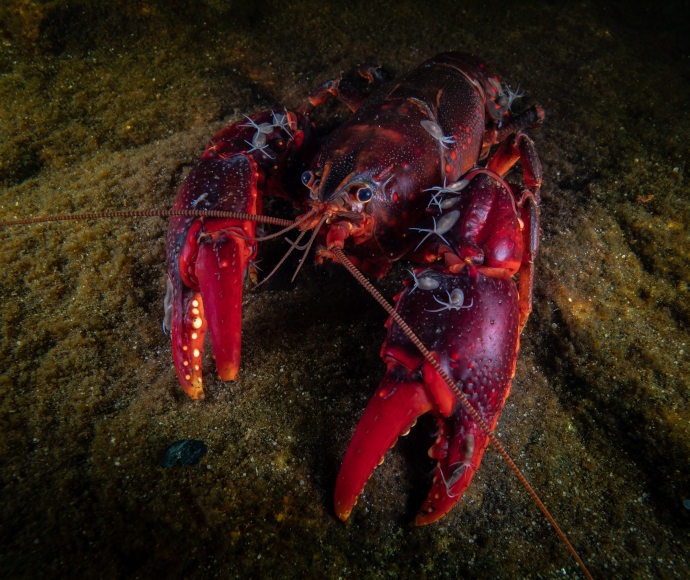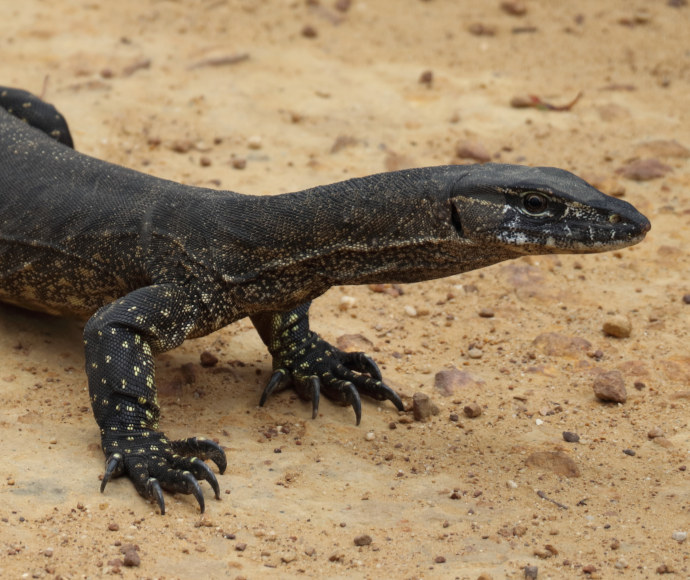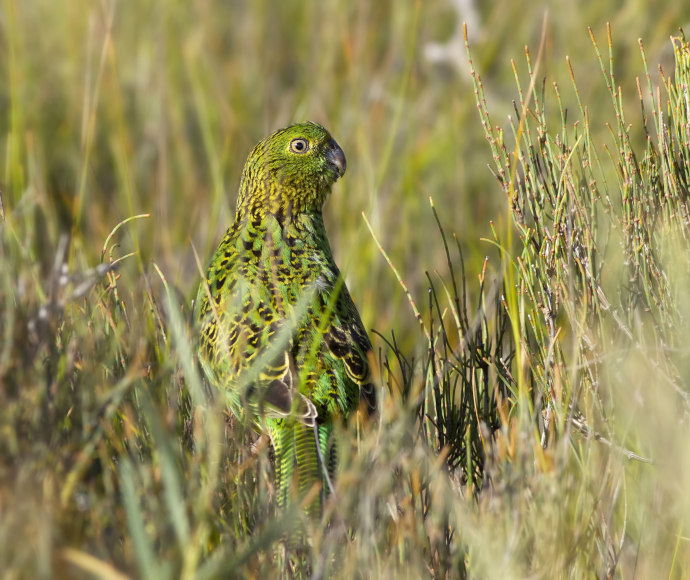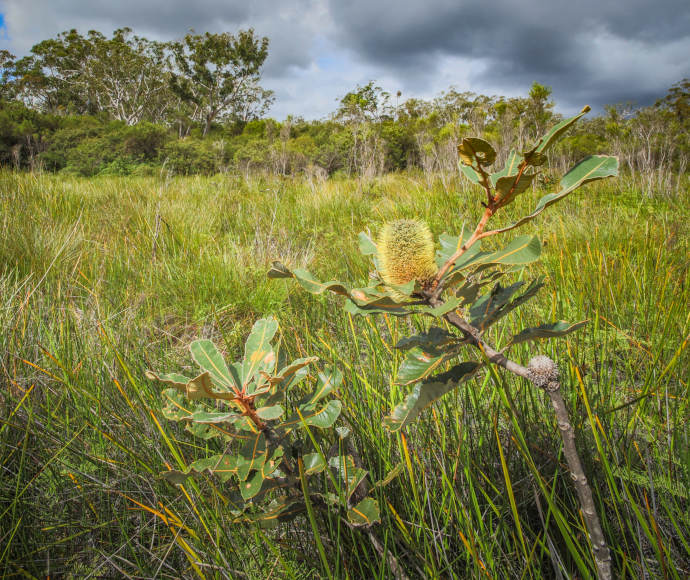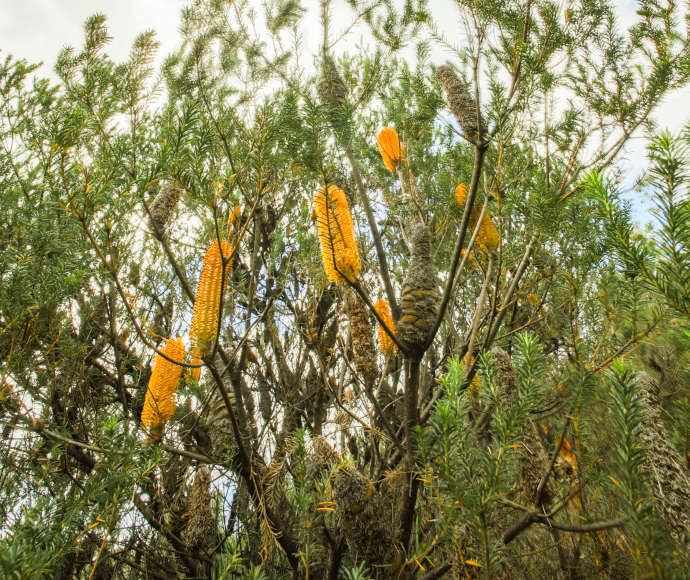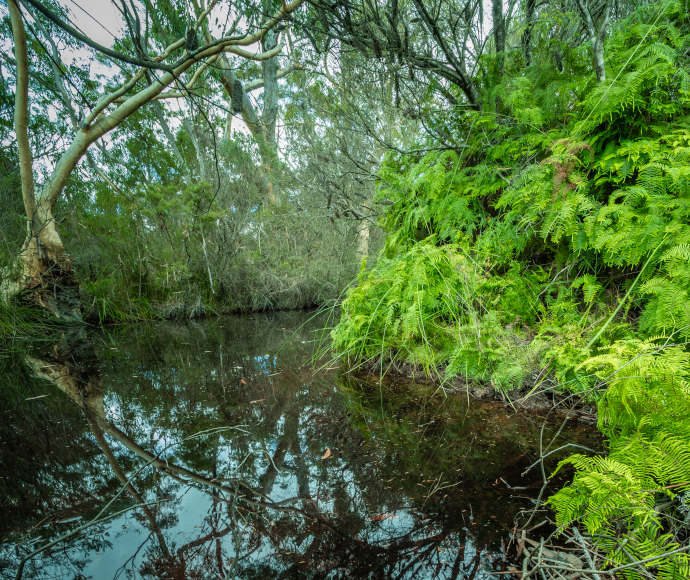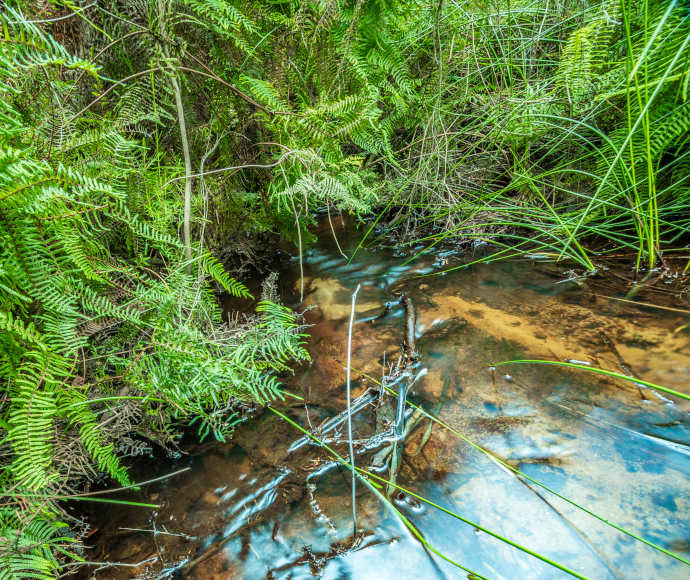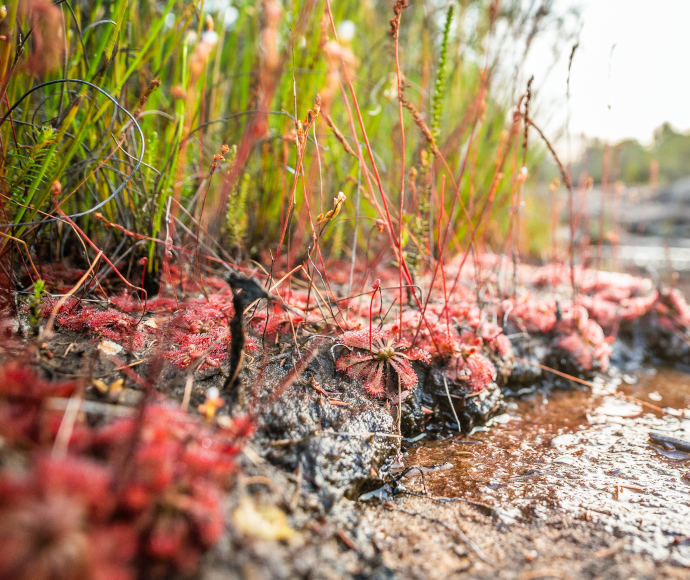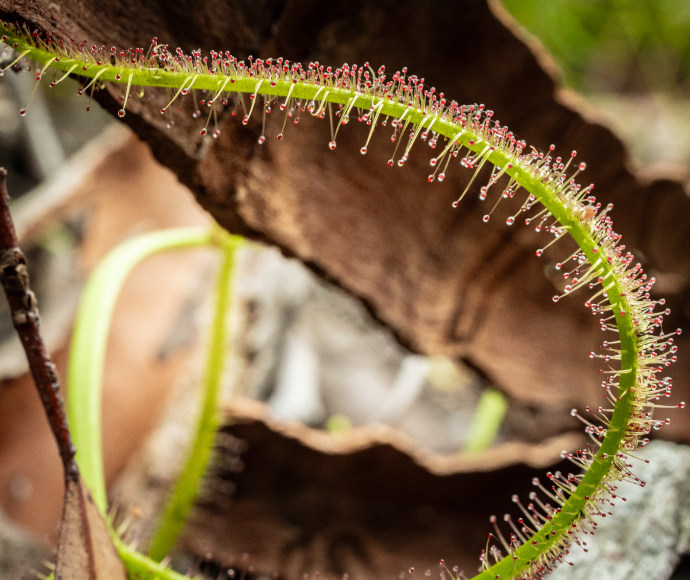The surprising world of Sydney's coastal upland swamps
Carnivorous plants, giant prehistoric dragonflies and nest-building frogs – many plants, animals and other organisms have been inhabiting the steamy misrepresented ecosystems that we call ‘swamps’ for hundreds of millions of years.
A far cry from the muddy mess that the word ‘swamp’ evokes, the coastal upland swamps of greater Sydney and the Illawarra region are full of subtle beauty, from their crystal-clear streams to the vibrant collection of flora and fauna they support. Residing here are ancient giant insects, colourful spiny crustaceans, insatiable carnivorous plants and fascinating amphibians.
These swamps are classified as a ‘threatened ecological community’, which means they have important and unique conservation value. They’re also right on the doorstep of the biggest population centre in Australia, only a short drive from Sydney or Wollongong.
The prehistoric petaltail
Petaltails (Petaluridae) are an ancient family of dragonfly whose lineage can be traced back to the Late Jurassic. One member of this family is the endangered giant dragonfly (Petalura gigantea), which has an enormous wingspan of over 12.5 cm and a fascinating life cycle that occurs within the coastal upland swamps.
All dragonflies live a stage of their lives as larvae. In many species, this period is spent underwater in streams, rivers and pools, but giant dragonfly larvae spend their time underground – burrowing in waterlogged, peaty soil. They are voracious predators, hunting nematodes, worms, and ambushing prey at their burrow entrances – possibly even preying on small frogs and tadpoles. Giant dragonfly larvae live this subterraneous lifestyle for a surprisingly long time – at least 6 years, but possibly for over a decade.
When the time is right (usually early October) the larvae emerge and climb the nearest shrub to undergo ecdysis (shedding their exoskeleton, or skin). The only trace of their past life that will remain after this is a casing attached to the shrub and an empty burrow in the soil below. Now, after years of living under the ground, they are finally ready to take to the air as adult dragonflies.
Compared to their larval stage, their life as adults is fleeting: the giant dragonfly experiences flight for just one summer. They continue their predatory habits during this period, consuming all sorts of insects, and the males are known to be very territorial. Mating occurs over this summer flying season, after which the females lay their eggs back into the wet soil and sphagnum moss where they lived most of their life , completing their life cycle and establishing the next generation.
Frogs in trees, nests and burrows
You’ll find frogs from all hops of life in the coastal upland swamp. One resident, the giant burrowing frog, can aptly be described as ‘round’. Growing to almost 10 cm long, they have extremely muscular forearms and hindlimbs, giving them their trademark ‘tough guy’ appearance. Like many Australian amphibians the giant burrowing frog is threatened with extinction, with an estimated population decline of over 30% in the last 10 years. Giant burrowing frogs aren’t restricted to coastal upland swamps, but they occur frequently within this threatened ecological community and rely on many of the streams and pools to breed. Their presence is usually confirmed by their big slow tadpoles who are much easier to spot than the adult frogs, who usually remain hidden.
Contrasting the hulking mass that is the giant burrowing frog is the red-crowned toadlet – a tiny, delicate frog from the Pseudophryne genus. This vulnerable ’toadlet’ is found only in very specific pockets within the Sydney Basin, and they’re picky about their habitat for a reason – unlike many other frogs (who lay their eggs in water), the red-crowned toadlet lays their eggs on land.
They construct little nests beneath rocks and logs in amongst leaf litter, with the fathers standing guard as the eggs develop.
Although these ‘toadlets’ live on land, they’re still reliant on periodic waterflow. They need rainfall to wash their partially developed tadpoles into ephemeral creeks, where they will metamorphose and reach their final form.
The red-crowned toadlet is under threat from urban development , habitat clearing and fragmentation, and changes to the availability of water via dams, drainage and climate change. Unfortunately, they have become locally extinct in at least 4 sites.
A recent taxonomic revision split what was thought to be Littlejohn’s tree frog into 2 distinct endangered species – the southern heath frog (Litoria watsoni) to the south and Littlejohn’s tree frog (Litoria littlejohni) to the north. Littlejohn’s tree frog is primarily restricted to the Sydney Basin, ranging from the Watagan Mountains to the north, Blue Mountains to the west and Dharawal National Park to the south.
True to their categorisation as ‘tree frogs’, Littlejohn’s tree frog is a forest-dependent generalist.
‘While they occupy and traverse a variety of habitats from woodland to heath, one thing they rely on is the presence of long-lasting pools that allow tadpoles to reach metamorphosis – exactly like those found in the coastal upland swamp,’ explains Threatened Species Officer Rachel Melrose.
‘There’s a ton we don’t know about this species, but we’re in the middle of an enormous population survey of this frog that is shedding light on the extent of its range and if any decreases have occurred since the last time a survey of this scale occurred.’
One thing is certain – the coastal upland swamps, particularly in the Woronora Plateau, are a real stronghold for this species, with tadpoles and adults detected at many sites.
Other swamp animals
Swamp inhabitants aren’t limited to frogs and dragonflies. Three spiny crayfish species call the permanent streams and pools home; the enormous giant spiny crayfish and vibrant Sydney crayfish are found in the northern swamps while the elusive (and endangered) southern hairy crayfish lives in the southern swamps closer to the Illawarra escarpment.
Many other threatened species are found in the swamps, including ground parrots, eastern bristlebirds, eastern pygmy possums and Rosenberg’s goanna.
A diverse plant community
Water flow, substrate, recent rainfall and fire history all contribute to the unique formation of coastal upland swamp ecosystems, creating a complex mix of smaller swamps and highly diverse mosaics of vegetation.
Not all swamps are built the same, and the size of a swamp influences what plants you might find there. Larger swamps are more diverse and can support scrubs, heaths, sedgelands and fernlands with taller forests on the border. Over 200 plant species are known to occur in coastal upland swamps, including a variety of heaths, small banksias, flannel flowers, grass trees and grevilleas.
Some of the most intriguing plants you’ll stumble upon are 2 varieties of Drosera, commonly called ‘sundews’. You’ve probably seen these before – little red pancake-shaped plants that look like their leaves and stems are covered in shimmering droplets of water (hence the name). These ‘droplets’ are actually a sticky enzyme that oozes out of tiny hairs, and are key to this plant’s deadly deception. Insects are attracted to the flowers of the sundew, but instead become trapped in this sticky substance. The enzymes digest these victims, providing protein to supplement the nutrients it takes from the soil.
Swamp stronghold – the Woronora Plateau
Swamps take an incredibly long time to form, requiring the perfect combination of location, geology and climate. Of the over 5,300 ha of coastal upland swamp that we know about, around 83% of this occurs on the Woronora Plateau, just south of Sydney. It’s here that clouds forming over the ocean collide with the Illawarra escarpment, producing orographic (mountain) rainfall, fogs, and more cloud cover, which increases rainfall and reduces evaporation. Combine this with the flat topography of the plateau and an impermeable layer of sandstone substrate, and you have the perfect combination of ingredients for water to be trapped and swamps to form.
With so much of this endangered ecological community in one small spot, Woronora is an incredibly special and sensitive area for this threatened ecological community. Obvious threats are the impacts of climate change, such as increased fire or prolonged dry periods, which will likely decrease the size and number of these swamps.
Other threats include any activity that can fracture bedrock layers or alter groundwater, such as longwall mining, which can lead to water draining from the swamps or changes in ecosystem function that are beyond recovery.
When you’re walking through a coastal upland swamp, listening to water bubble through the dense heath and the shrill dusk call of the eastern ground parrot, it’s easy to forget how close you are to Australia’s largest city. The ecosystems right on our doorstep are those we often overlook, but they’ll be the first things we miss once they’re gone.
Swamps provide valuable ecosystem services that benefit humans, especially in their role as a natural filter. Swamps slow and capture water as it flows through the area, preventing erosion and allowing sediment to settle to the bottom of the swamp. Nutrient and sediment pollution is retained by the swamp, while cleaner water is released into the surrounding rivers and creeks.
Let’s show these sweaty, mossy, misunderstood coastal upland swamps some love, and appreciate all the things they provide us with, from cool crustaceans to cleaner water.
For more information on coastal upland swamps, view the NSW Threatened Species Scientific Committee's listing.
Information on the giant dragonfly provided by Dr Ian Baird.
